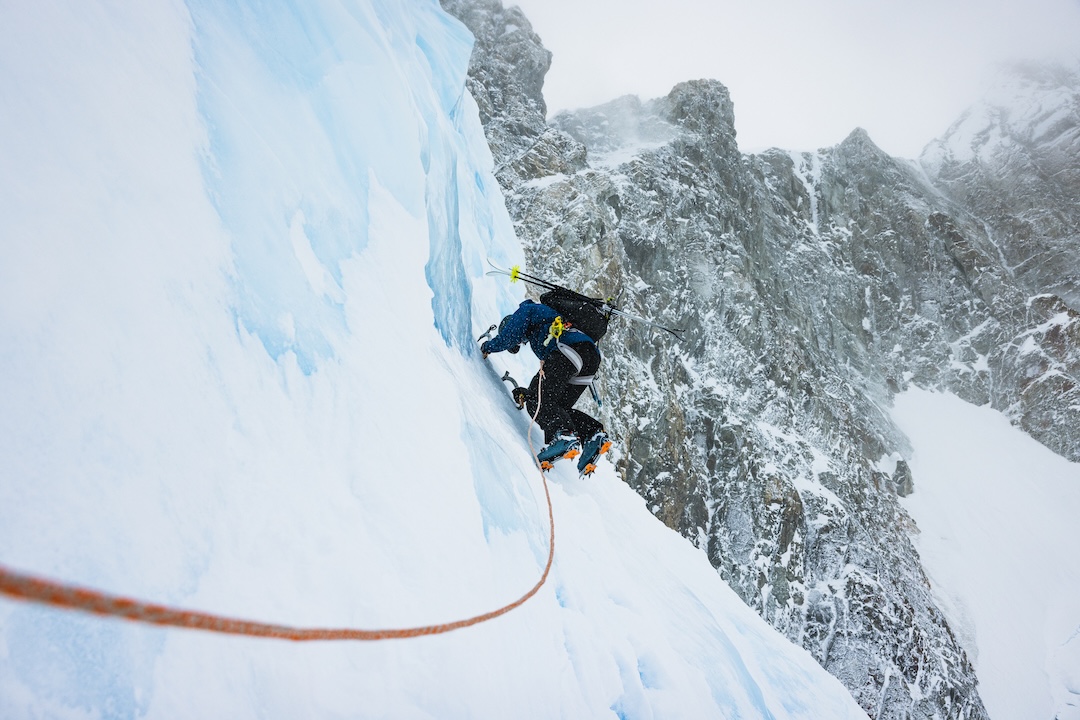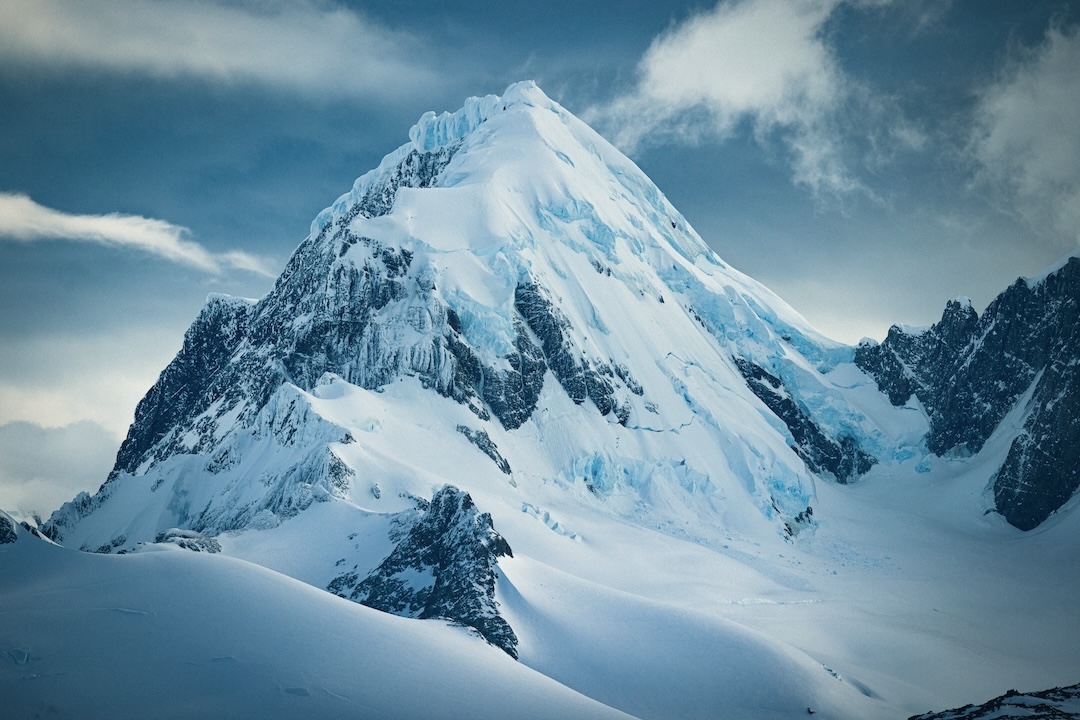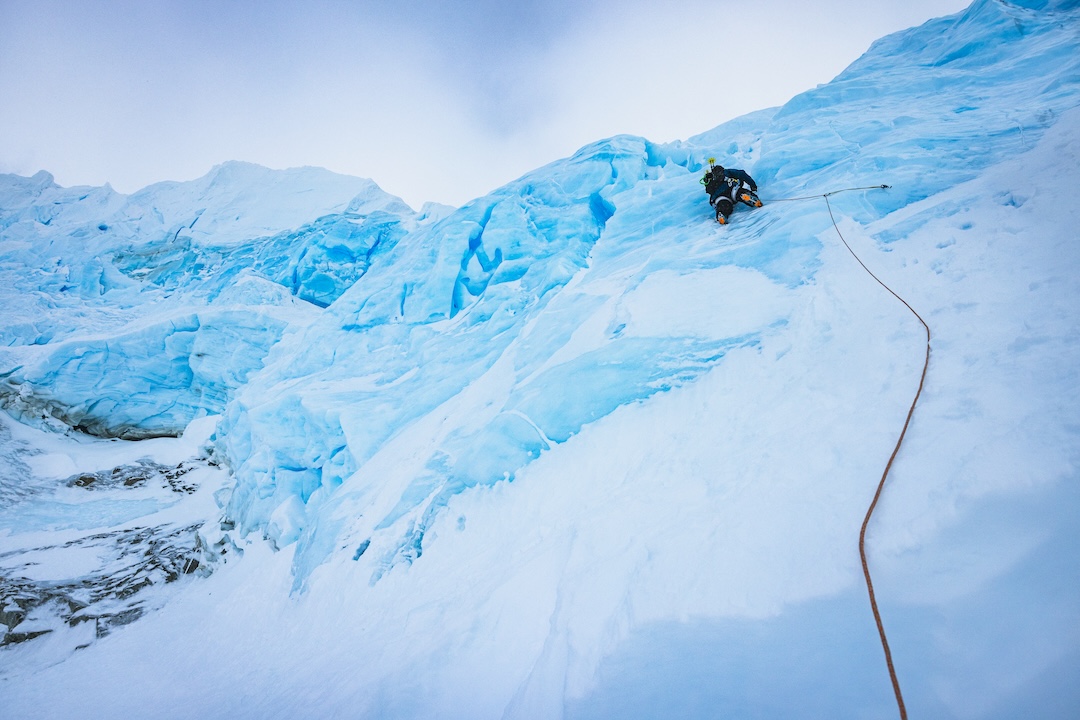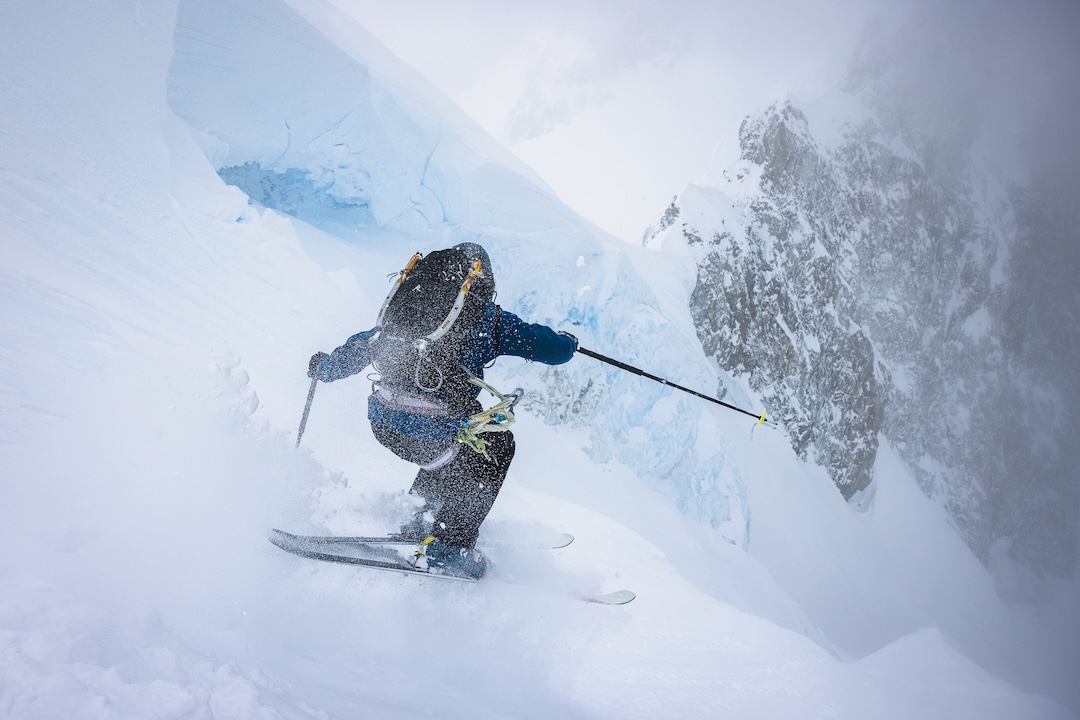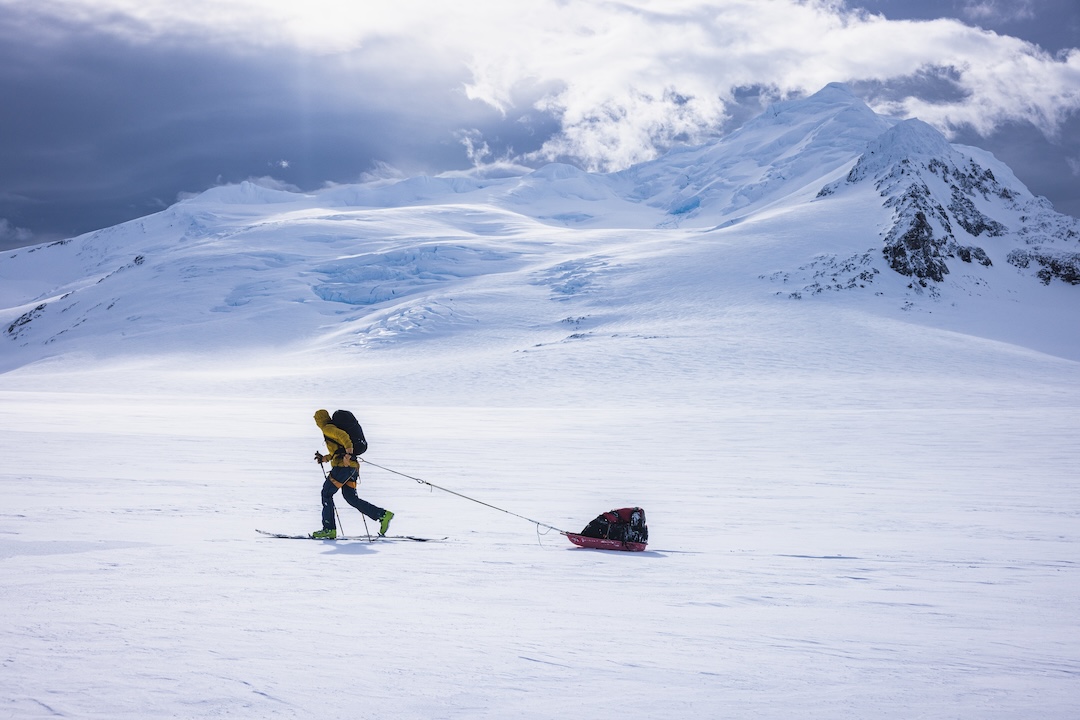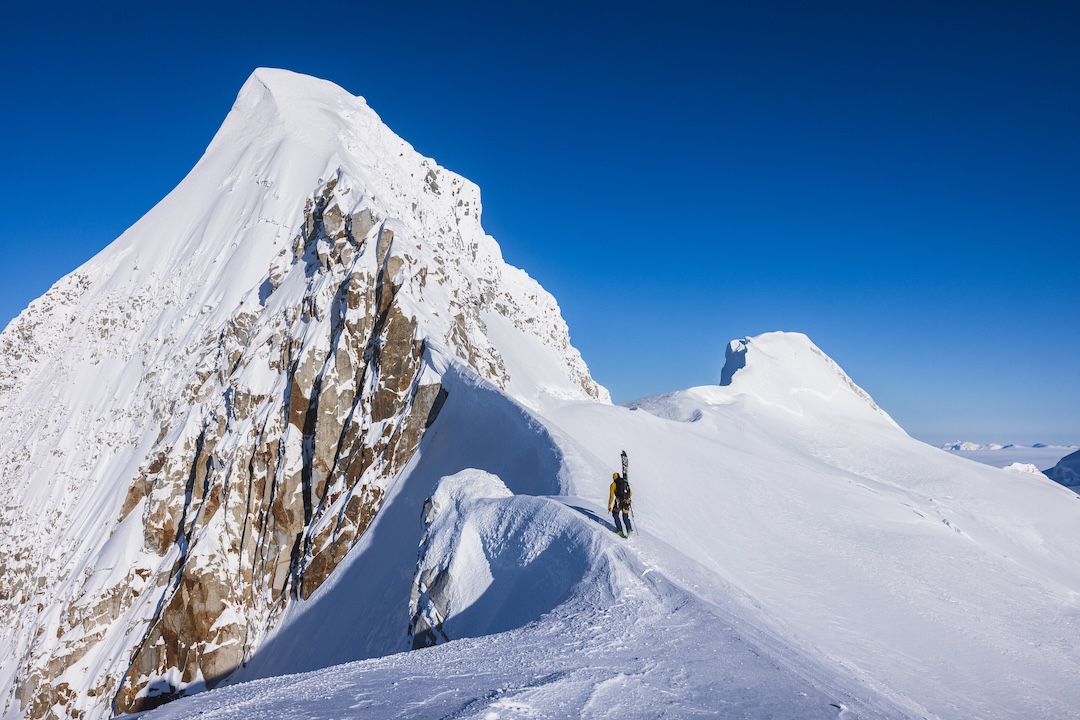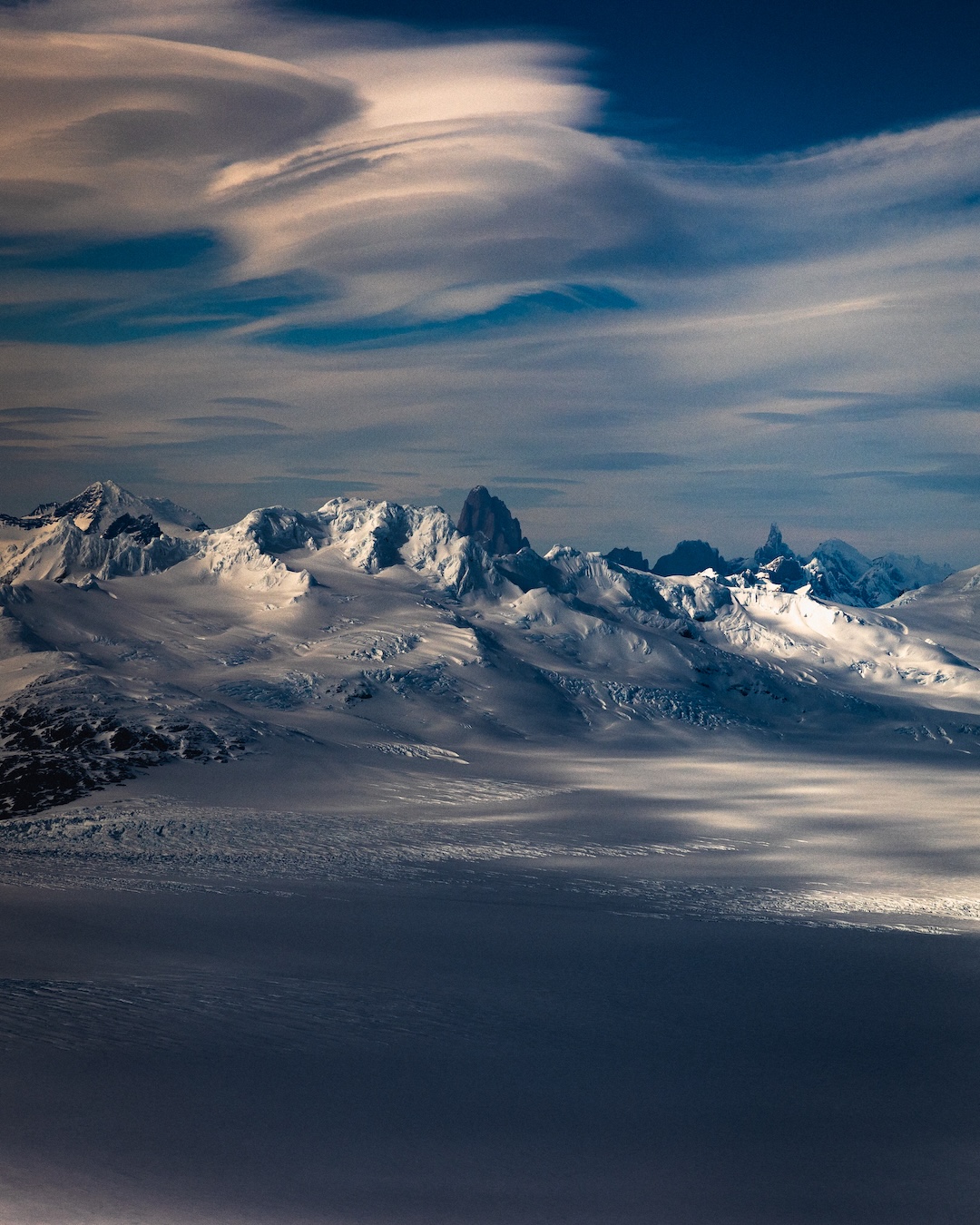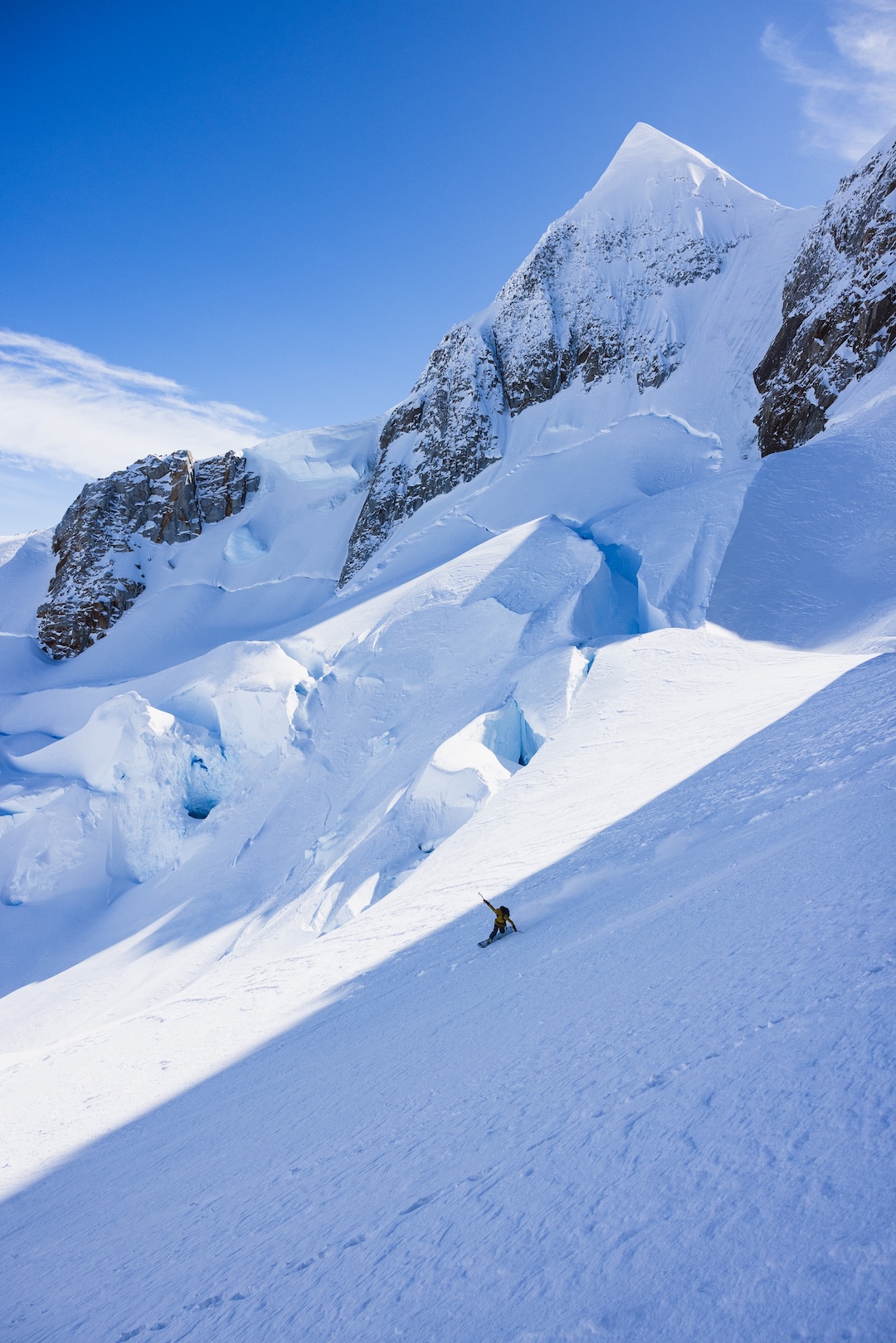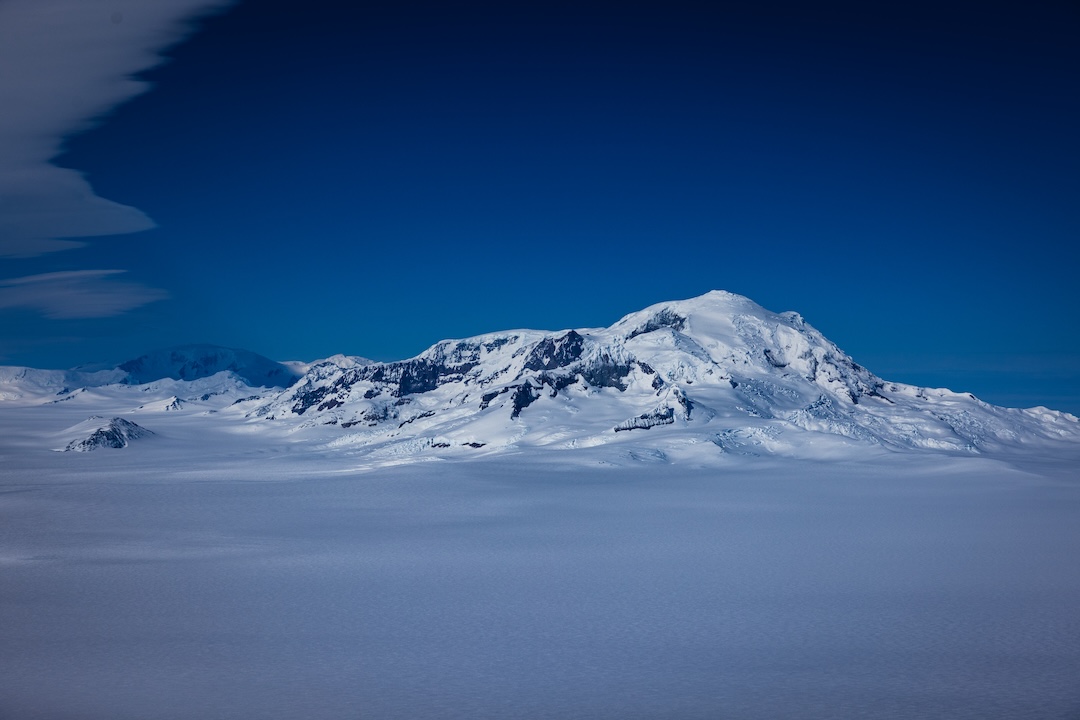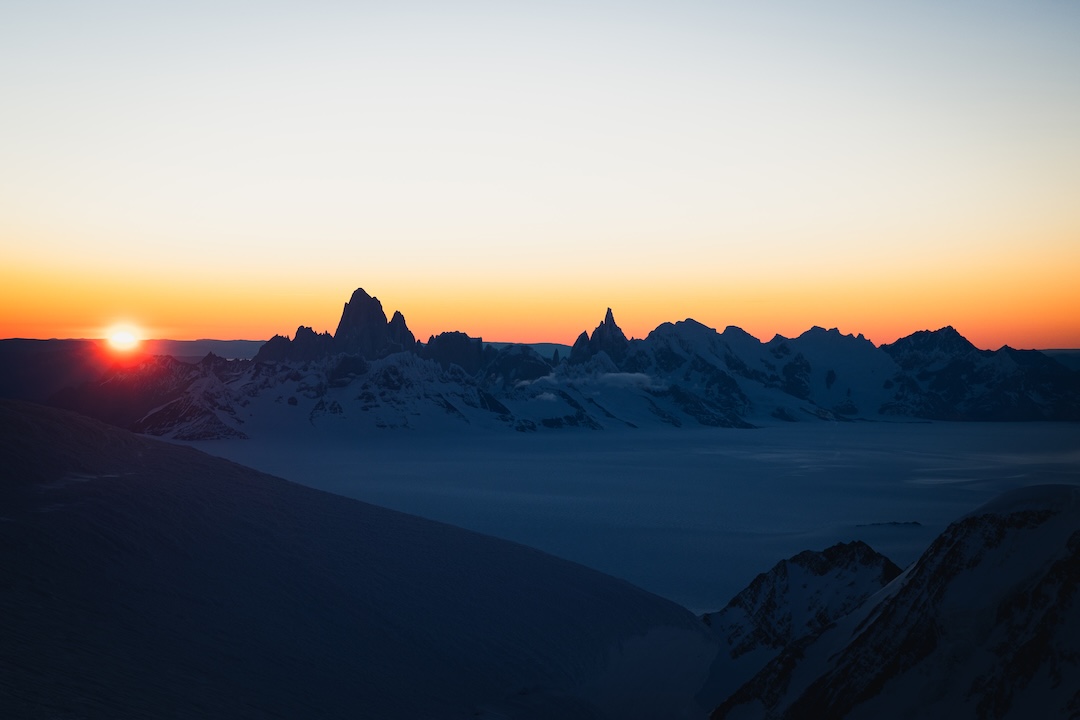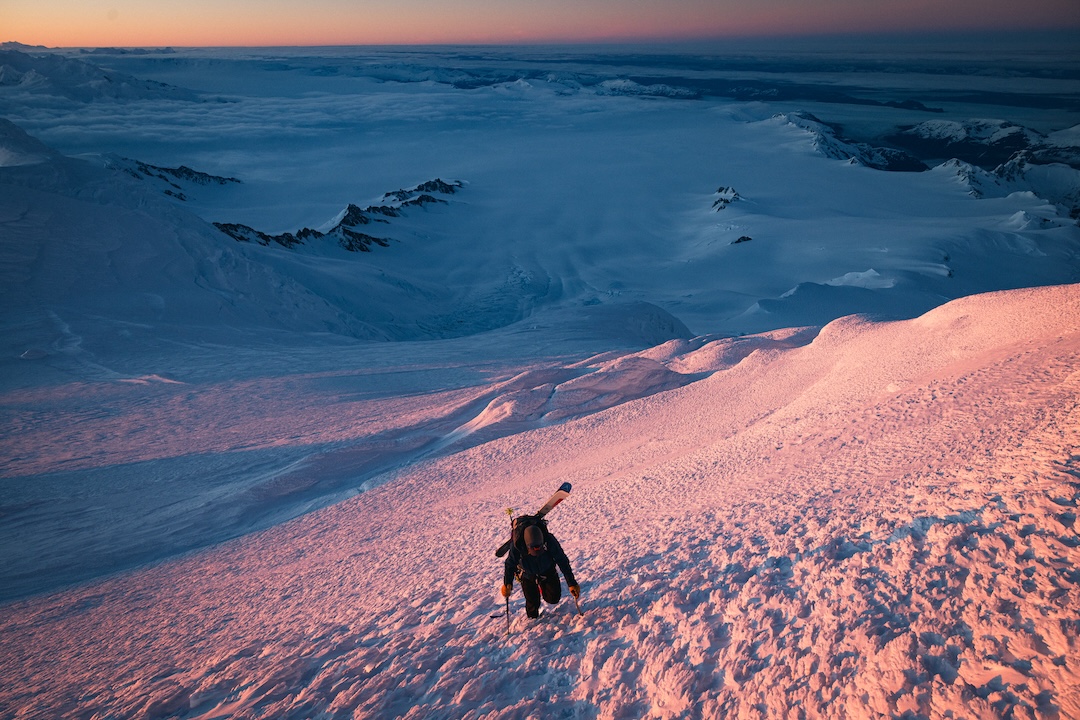Cerro Ambrosio Oeste, Cordón Ilse Von Rentzell Sur, Volcán Lautaro: First Ascents and Ski Descents
Chile, Southern Patagonian Icefield
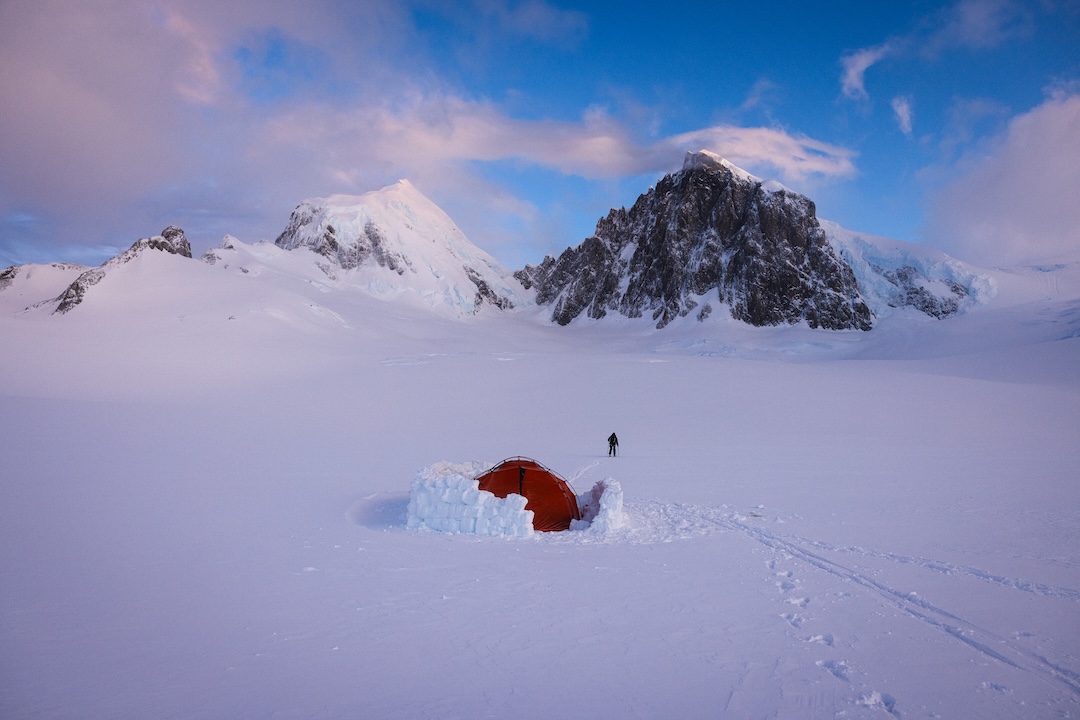
The Southern Patagonian Icefield—the world’s second-largest nonpolar icefield—is frequently visited by climbers on its margins, but the icefield’s notoriously volatile weather makes extended expeditions quite rare. Between November 2023 and November 2024, I ventured onto the icefield three times with two different partners for first ski descents.
In November 2023, Thor Retzlaff (USA) and I approached the icefield from the Eléctrico Valley near El Chaltén. In a region known for fast and light alpine style on peaks closer to town, the ice demands a heavy and steady approach—or “back to the future” style, as an elder Chaltén local called it. We carried an abundance of culinary luxuries and a minimal amount of technical gear: one 30m Petzl Rad Line and a pair of ice screws. We’re skiers, not climbers, after all.
Pushing through days with up to 120 kph headwinds and zero visibility, we traveled north roughly 80km along the ice to the cirque below the twin Cerro Ambrosio peaks (-48.78791, -73.24561). Cerro Ambrosio Oeste is a brilliant glacier-clad behemoth that was most likely unclimbed, and Cerro Ambrosio Este, which boasts an intimidating alpine rock and ice headwall, was climbed a year later (see story below).
We started up Cerro Ambrosio Oeste on the eighth day of our expedition, but deteriorating weather forced us to bail after attempting to climb a 45m glacial ice headwall that guards the southeast ramp.
On day 14, we approached our line in less windy but low-visibility conditions. Thor led a run-out 30m pitch of vertical ice above the bergschrund on our 6mm line with just two ice screws, and another 15m of less vertical ice delivered us to the ramp, where we found incredible stable powder. We simuled through steep snow, ice bulges, and crevasses to reach the summit arête (greater than 50°), which provided incredible climbing on névé coated in chicken-feather sastrugi.
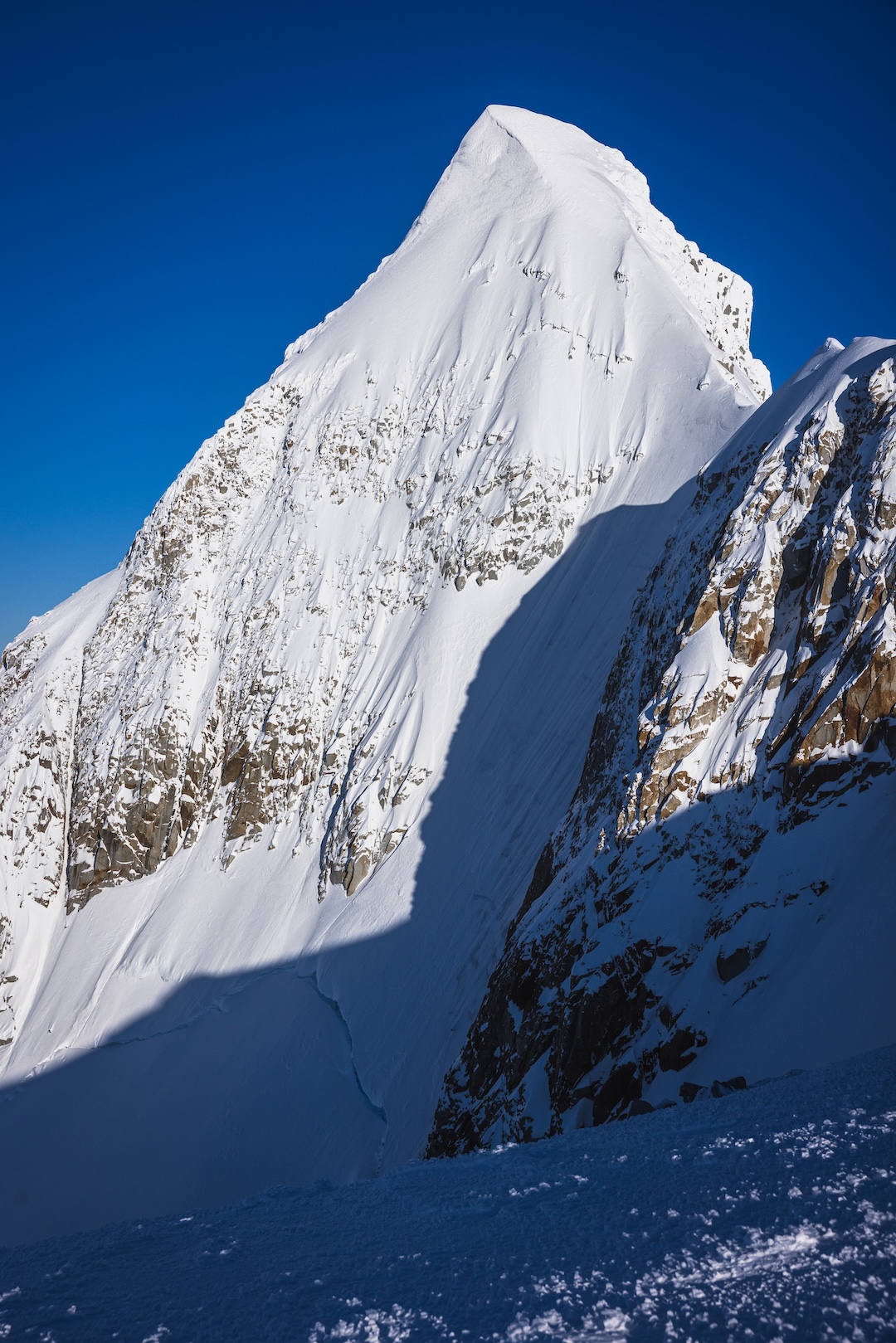
We topped out at just under 2,600m in a complete whiteout, wary of the steep drop-offs shown on the map in three directions. After transitioning to skis, we descended along our track, which was rapidly being wiped away by wind. We skied the steep, icy arête crux with ice axes in hand, then linked turns in perfect snow on the serac-lined ramp to the top of the ice headwall. We rappelled three times on naked V-threads and descended the glacier to our camp after a 12-hour day. We jokingly called this new descent Mate de los Dioses (600m, 45m rappel, 50°)—an ode to the name Ambrosio.
I returned to the ice cap for a 20-day trip in October 2024, hoping to ski Cordón Ilse Von Rentzell. The precise location of the peak given the name Cerro Ilse Von Rentzell is unclear. The northern summit is the highest point and was first climbed in 2021 by Natalia Martínez and Camilo Rada (AAJ 2022), and was first skied by Cedric Babec, Andres Bosch, Bernabe Lopez, and Mike Dahlquist in 2022 (AAJ 2023). However, it’s fairly likely the Cordón’s aesthetic southern summit, with its striking fin-like protrusion, was actually the one with the original Ilse Von Rentzell name, because it would have been more visible to the team that named it in 1959. The southern peak was still unclimbed, and this became the objective for me and Fer Ferrandez (Spain).
Again approaching from the Eléctrico Valley, we eventually established a camp in the glacial cirque below the southern fin, about 25km northwest of Refugio O’Higgins.
From camp we could see that the lower portion of our dream line—descending to the south from a col on a 300m face with a sustained pitch greater than 60°, a line we first glimpsed years ago from a great distance on a peak close to El Chaltén—was fullof glacial ice and significantly steeper than expected.
Adjusting our plans, we bootpacked an icy but skiable 300m, 45°–50° couloir on the climber’s far right of the south face to the east ridge, where we encountered double cornices and unprotected climbing. We descended the north face slightly, wrapping under the ridge to a spot on the north side of our original target col. Fer led a 45m pitch of M4 to the base of the final ridge. We easily booted up to the pyramidal peak in crusty névé snow and topped out at 2,171m.
I descended the arête on skis, then we rappelled the mixed pitch, reversed our tracks back to the ridgetop, and skied the couloir we had ascended, in variable conditions. The ascent of the south couloir and east ridge was roughly 1,000m from base camp, with 600m of technical terrain (VI 50° M4) above the glacier.
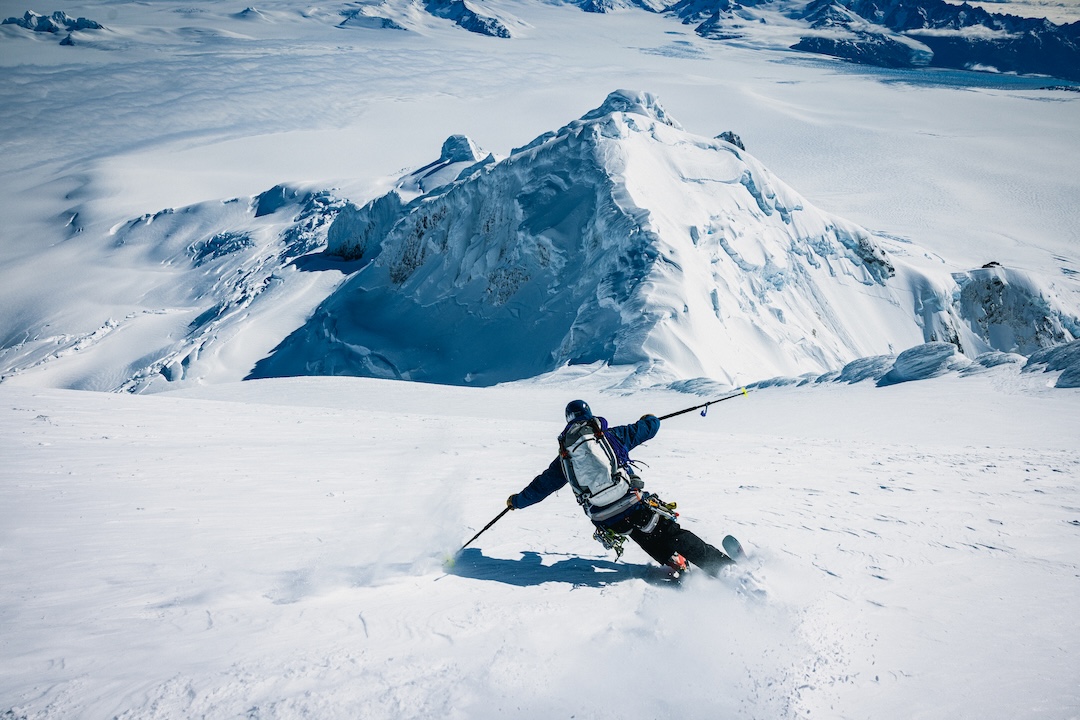
Less than a few weeks later, I returned to the icefield with Thor Retzlaff and the goal of the first ski descent of the north face of Volcán Lautaro. At roughly 3,600m, Lautaro is the tallest peak on the ice cap and was first climbed by Peter Skvarca and Luciano Pera in 1964 (AAJ 1964). From Ilse Von Rentzell several weeks prior, I had an unobstructed view of Lautaro’s unknown north face: a large planar upper pitch and 2,200m of vertical relief to the icefield below.
From a refugio at the edge of the ice cap, we made a 30km crossing to establish a camp below Lautaro’s standard route up the southeast ridge. Starting at 11 p.m. on our sixth day out, we climbed this route, ascending roughly 2,000m from the east to the ridge, which connects over multiple subsummits to the top, generally in moderate terrain with a few sections above 50°. We passed massive D3+ avalanche debris and used ski crampons until the rime ice became too firm, necessitating boot crampons. We navigated the southeast ridge’s infamous “angel feather” sastrugi, crevasses, and a few steep snow pitches to reach the summit (3,580m) at 8 a.m.
To start the descent, we booted down approximately 30m of rime-encrusted mushrooms and dropped into the north face in top-down onsight style. One hundred meters of chicken-feather sastrugi gave way to perfect chalk conditions on the upper pitch (about 700m). We then passed the crux—a 55° icy slope that ran between large cliffs and crevasses—and continued down. After a total of 2,200m of descent onto the icefield, we circumnavigated the east side of the massif past Cerro Pangrec and Cerro Mimosa to return to camp. We arrived at 4 p.m. to finish a 17-hour, 33km, and 2,400m push.
We capped this 11-day trip by circumnavigating the Chaltén and Torre massifs via the popular Vuelta al Hielo, allowing us to walk straight into town—a complete “Vueltón del Lautaro,” so to speak.
—Matthew Tufts, USA


